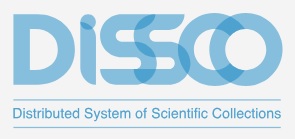Introduction
Data quality management is a big and important part for ensuring findability, reusability and interoperability of the data delivered to a common virtual catalogue. Europeana developed a framework, the Europeana Publishing Framework, that ranks the data concerning their quality. The more information and depth is offered, the more you get from Europeana in terms of visibility and re-usability. The quality concerns both the metadata and the digital objects. There are specific quality criteria for metadata. Find here below an overview of the quality criteria for digital objects (content) at Europeana.
Content Tiers
The content tiers are part of the framework developed by Europeana. There are four tiers (1-4), with 4 being the highest quality. Until recently, there was also level 0, but these objects are no longer displayed on Europeana due to their poor quality. Europeana mentions three categories that can influence the quality of your content: direct link to object provided, rights statement and Europeana API displays.
| Category | Explanation | Benefits |
| Direct link to object provided | – providing a direct link to the object is mandatory – quality of this category is proportionally linked to the size of the digital resource | high quality objects can be used in different fields like Europeana collections, educational projects or research |
| Rights statement | – providing a Creative Commons or rightsstatements license is mandatory – quality of this category increases with the possibility of re-usage of the objects | the more open your license, the better are the re-usage possibilities |
| Europeana API displays | – for use within the Europeana APIs you have to provide your metadata with a direct link to the object – quality increases in combination with reusability of the objects | objects can become a full part of Europeana and explore the bandwidth of its functionalities |
If you want to learn more about the Europeana Publishing Framework and the content tiers you can visit Europeana’s website, view the quick summary or the video below.
Additional Material
Additional Information related to Natural Science Collections
DiSSCo: The Distributed System of Scientific Collections is a new world-class Research Infrastructure (RI) for Natural Science Collections. The DiSSCo RI aims to create a new business model for one European collection that digitally unifies all European natural science assets, sharing common access, curation, policies and practices across countries while ensuring that all the data complies with the FAIR principles (Findable, Accessible, Interoperable and Reusable data).

Find here the DiSSCo Github with guidance and workflows for the digitisation of natural science collections.
SYNTHESYS+ project: As specimens are 3D physical objects with different characteristics many techniques are available to 3D digitise them. For inexperienced users this can be quite overwhelming. Which techniques are already well tested in other institutions and are suitable for a specific specimen or collection? To investigate this, the Synthesis+ project has set up a dichotomous identification key for digitisation techniques: DIGIT-KEY, (https://digit.naturalheritage.be/digit-key). For each technique, examples used in SYNTHESYS+ Institutions are visualised and training manuals provided. All information can be easily updated and representatives can be contacted if necessary to request more information about a certain technique.
